Need for Speed: Shift is a racing game that tries to do a lot of things, and the good news is that it does most of them well. The bad news is that Shift does very little that other racers haven't done before it, and it excels at nothing. The racing, the car and track selections, the vehicle customization and damage modeling, the career mode, the online play, the opponent AI--all of these things are good, but none of them are great.
Depending on what kind of racing game you usually play, being thrust into the driver's seat for a flying lap at the start of Shift's Career mode might go well, or very badly. Your performance on this lap determines your default difficulty level and handling model, and it's appropriately named the "Trial of Fire." There are no opponents to worry about, but getting a handle on Shift's controls can be a challenge on their own. Like a simulation game, Shift encourages you to brake early for corners, punishes you for straying too far from the racing line, and, at least by default, presents you with a steering setup that's extremely sensitive. But, like an arcade racer, Shift rewards you for sliding around corners, for "trading paint" with opponents, and even for forcing those same opponents into a spin or off the track. It's an awkward middle ground that you might never feel comfortable with.
When playing solo, your only options are Quick Race and Career mode. Quick Race lets you set up races, time attack contests, and drifting events on any of 36 different courses with variables that include car class restrictions, the number of opponents and laps, and the time of day. The Career mode amounts to little more than 150-plus of these events, set up as themed competitions between cars of certain classes or from certain countries and then arranged into a tier system that matches the one used for cars. You start out as a tier 1 driver with a tier 1 car, and as you progress you move into tiers 2 through 4 before unlocking the anticlimactic 10-race World Tour, which marks the pinnacle of your career. Oddly, you need to complete only a fraction of the events available to you in order to unlock the World Tour. In fact, if you're winning races and completing bonus objectives along the way, you can unlock both tier 4 and the World Tour before you've even finished everything in tier 2.
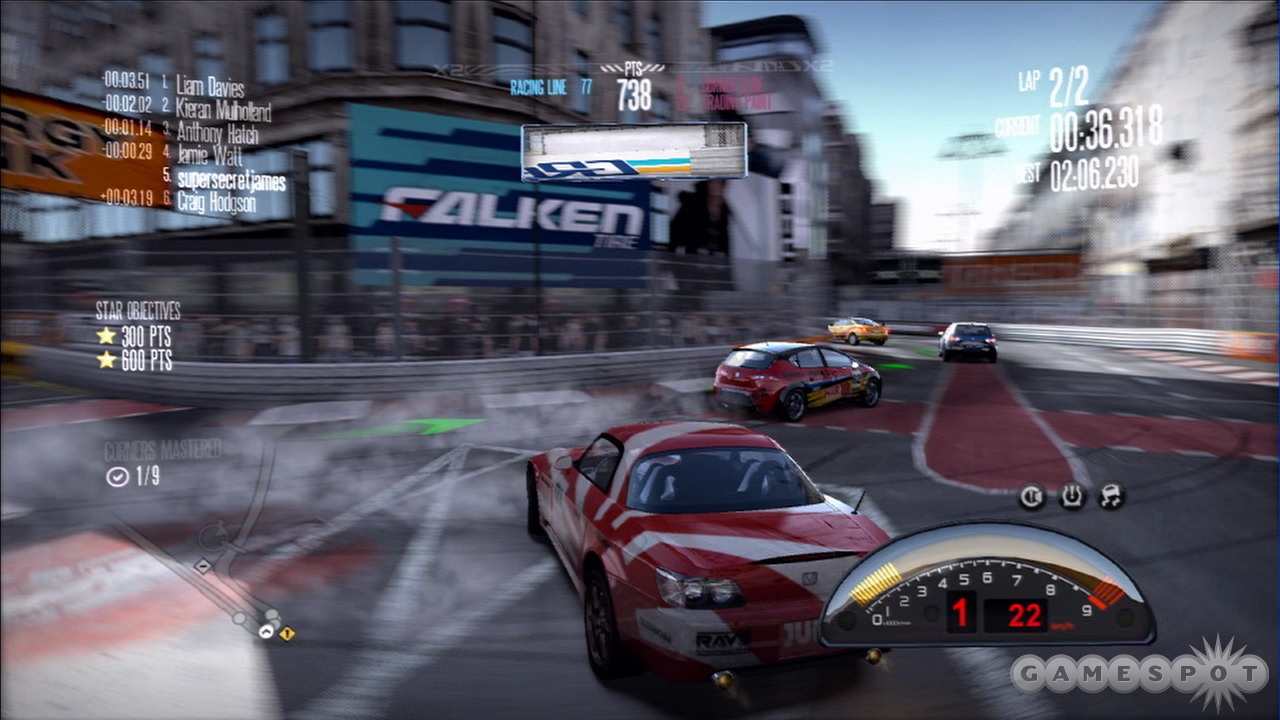
That's because you progress through Career mode by earning stars, and because the number of stars you're awarded at the end of each race isn't just based on where you finish. You earn one to three stars for a finish on the podium, and typically there are two extra stars available for reaching experience point milestones (earned through acts of "precision" or "aggression"), plus one for completing a bonus objective. The bonus objectives are varied and include stuff like mastering every corner, performing a clean lap, reaching a certain speed, or spinning out a number of opponents. These objectives are a neat feature because they encourage you to focus on different aspects of your race craft, and it's great that you can return to events to try for any stars that you missed.
Unfortunately, adding more stars to your tally isn't the only reason you're going to be repeating events in Career mode. Even on the easiest AI setting, your opponents are a competitive bunch, which can make for some thrilling starts to races, but the flip side is that they're not bashful about trying to find a way past you--even if that means forcing you off the track. There's no second-chance flashback option like that in Dirt 2, so if you end up in a gravel trap, you've just got to deal with it and almost certainly watch a number of opponents race past as you do so. It's entirely appropriate that straying off the course slows you down considerably, but when you combine that penalty with aggressive opposition and controls that make it tough to recover quickly, it can make for some extremely frustrating incidents. Adding insult to injury is that AI drivers seem able to drive on gravel and grass almost as quickly as they can on asphalt, which isn't consistent at all with the way your cars handle.
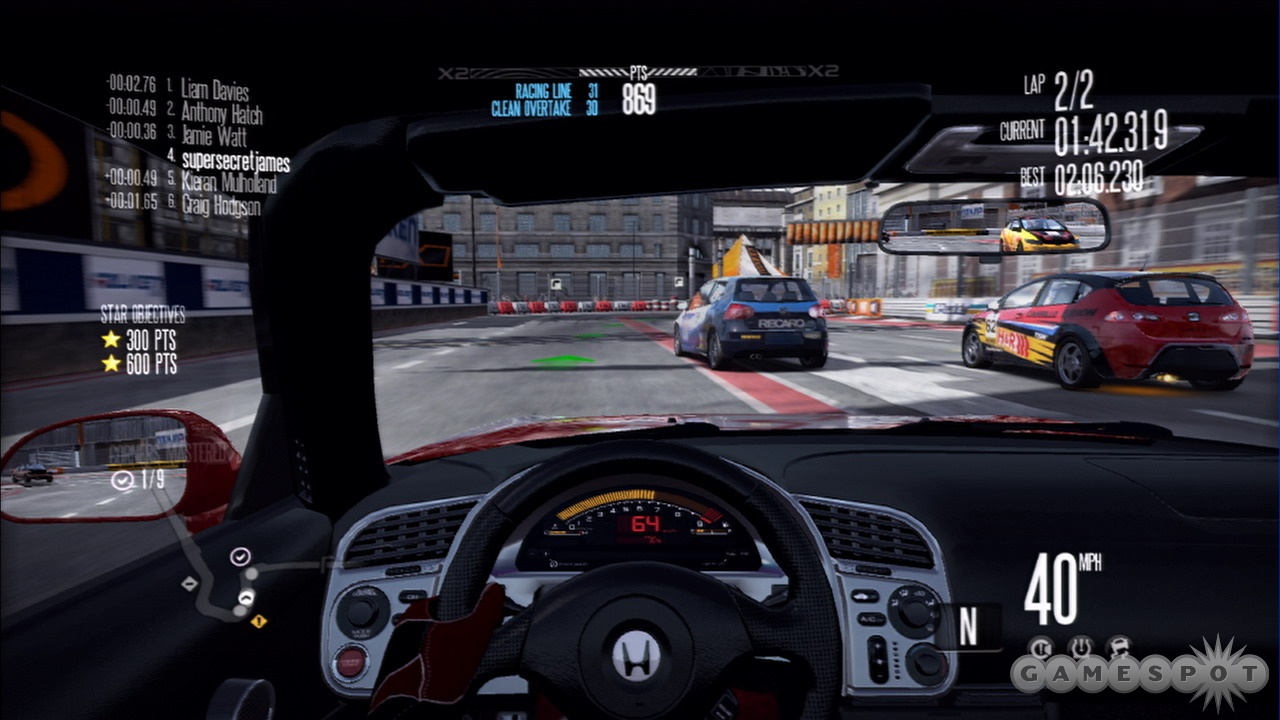
Getting involved in a big crash or straying too far from the track toward the end of an event can be disastrous, and feeling the need to restart a 10-lap endurance race because an overzealous opponent forced you into a tire wall is no fun. However, if the race still has plenty of laps left to run, you shouldn't be too quick to give up. Your opponents, it seems, while clearly eager to compete with one another and get to the front of the pack, also like to keep things interesting for you, so if you lag too far behind them, they'll invariably start driving at a more sedate pace until you can catch up. Clearly it's a good thing that one early mistake doesn't have to mean the end of your race, but at the same time it's not particularly satisfying to beat opponents who slam on the brakes if you get in trouble.
For a more authentic racing experience, your best bet is to head online, where your opponents will afford you no such courtesy. Online options include a Driver Duel tournament mode, in which a series of head-to-head races pit you and an opponent against each other in randomly selected identical cars, and ranked and unranked races for up to eight players. The variables that you can play around with when setting up an online race are the same as those that you get in the single-player Quick Race mode. Once you're with a group of players in a lobby, you have plenty of time to see what the next race is going to be and to choose a car either from your own Career mode garage or from a selection of stock vehicles.
Online play is lag-free for the most part, and if you approach it with the right mentality, it can be a lot of fun. If you go into an online event hoping for a clean race, though, you're probably going to be disappointed. Like Career mode, online play awards you experience points for both precision and aggression, so when you race alongside people with very different ideas about how the game should be played, things can get ugly. Furthermore, cutting a corner while playing online results in being slowed down to a crawl by way of punishment for a few seconds that feel like an eternity, regardless of whether or not you gained any advantage as a result of your actions. It doesn't sound like a terrible system on paper, but it's frustrating for drivers coming up behind you because you effectively become a slow-moving chicane that they have to navigate.
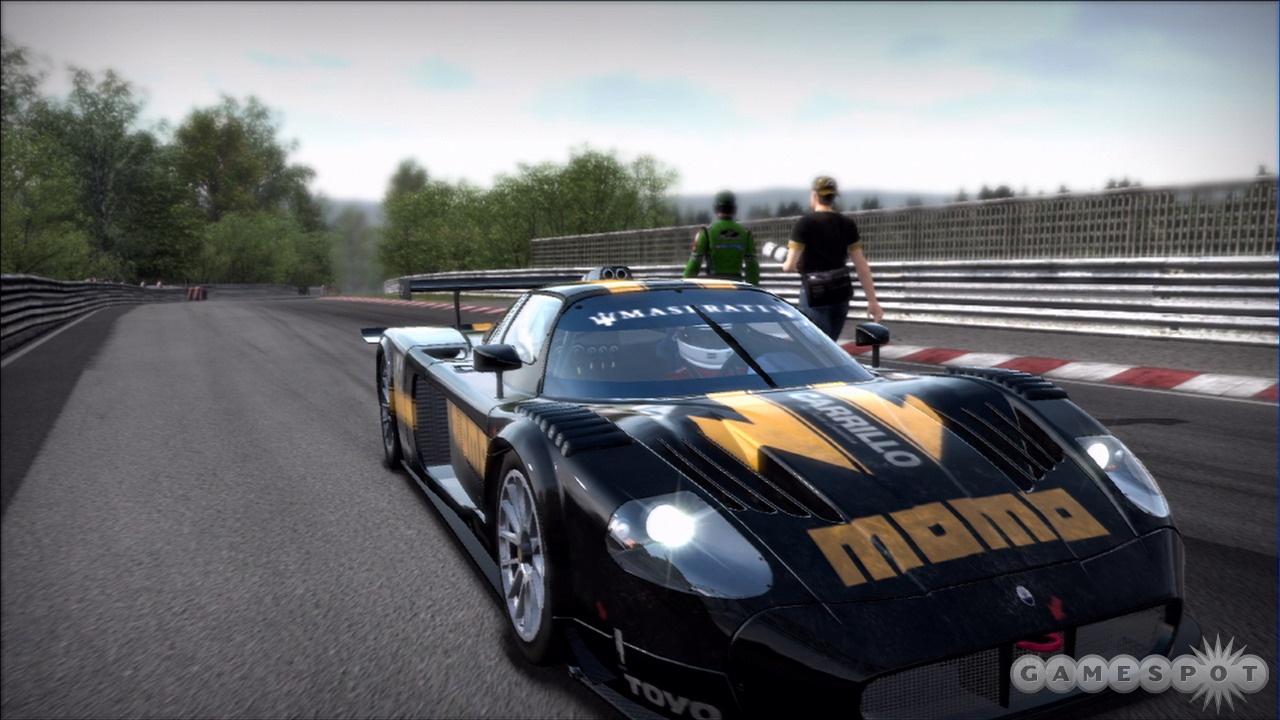
In addition to races, this jack-of-all-trades game incorporates drift events into both its Career and online modes. Only 11 of the cars that appear in the game can be used for drifting, and finding one that you feel comfortable with is even more difficult than finding one for racing. These cars are automatically tuned to slide so easily that pressing down on the accelerator even a fraction more than you absolutely need to can send your car straight into a donut. With practice it's certainly possible to perform some satisfying drifts around corners, and because the events aren't timed, you can win them by employing some cheap tactics and just swinging from side to side on the straights. Sadly, no matter how good you get at it, drifting isn't one of Shift's strong points, and perhaps the best thing that can be said about it is that it's easy to avoid entirely without feeling like you're missing out on much or hindering your Career mode progression.
Another of Shift's features that doesn't realize its full potential is car customization. There are around 55 cars to collect in Shift, though you never have enough spots in your garage for even half of that number. These cars can be painted, you can apply a handful of different racing liveries to them, and some of the performance upgrades you can purchase for them include cool-looking bodykits, but the custom livery designer is awful. Vinyls at your disposal include the usual assortment of primitive shapes, logos, flames, and tribal designs, as well as plenty of creative groups that you unlock as your career progresses--including badges that show off some of your accomplishments. The problem is that applying these vinyls and working with the tools that you can use to rotate, resize, and reposition them is a real effort. There's no option to constrain a vinyl's proportions when you resize it, there's no way to mirror a design from one side of your car to the other, and, worsening that problem, there's no Forza-style coordinates system in place to make transferring your design manually anything but a painful process.
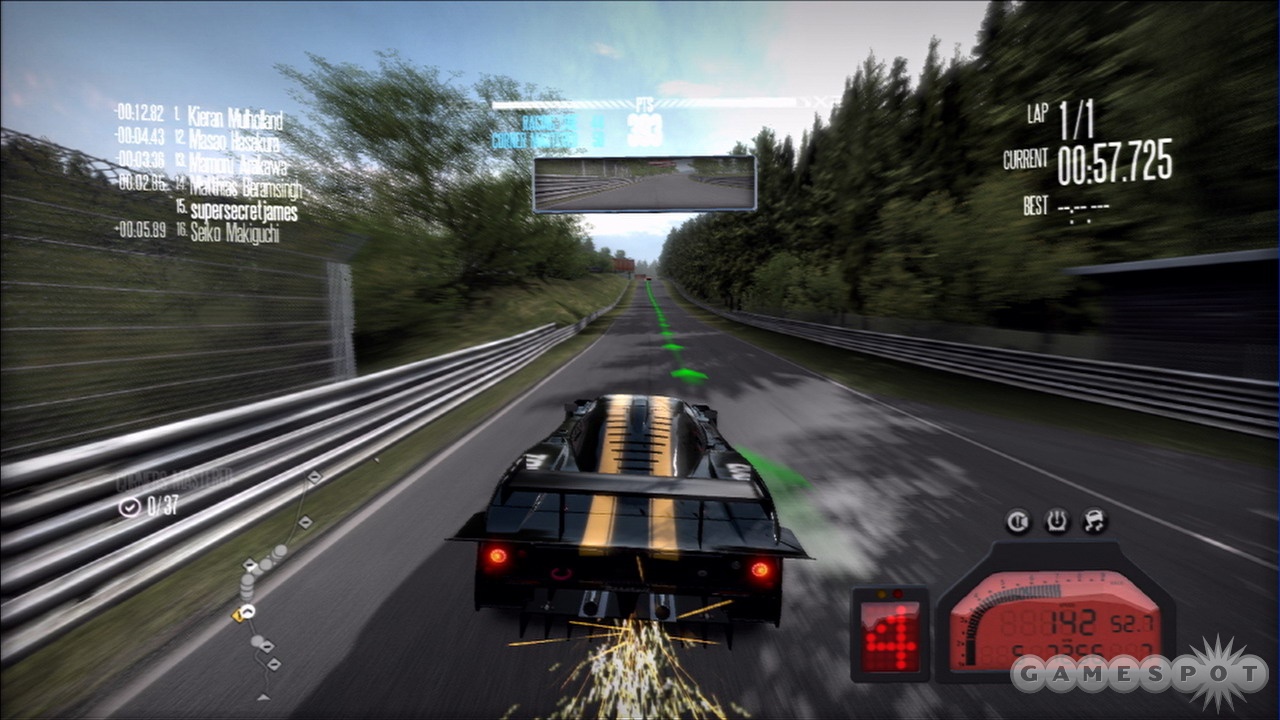
Fortunately the preset racing liveries, like just about everything in Shift, look pretty good. This isn't a game that's going to wow you with incredibly detailed car models or photo-realistic environments that stretch as far as the eye can see, but it's not a bad-looking game by any means, and the sense of speed when you get on a long straight in a fast car is so good that impending turns become daunting prospects. On some tracks, those same corners can be made even trickier by opponents who make a mess of them in front of you, because they kick up great-looking clouds of sand and dust in the process that partially obscure your vision.
Outside of races, Shift's presentation is functional but lacks any sense of refinement. Dark backgrounds work reasonably well when the white text of menus is popping off them, but when you're shopping for cars with paintjobs that are reflecting the dark environment all around them, the lack of light really doesn't do the vehicles justice. The Lamborghini Reventon that appears in this dimly lit showroom is dark gray, and you might need to adjust the contrast on your TV to make it out. The dark-blue-and-black Bugatti Veyron doesn't fare much better. Shopping for cars should be fun in a game like Shift, but it's actually a bit of a chore because the models take a second or two to appear as you scroll through the list, and for some reason you don't get to move the camera around them yourself. You also don't get control of the camera when you come to put new bodykits on your cars, so you have to wait for them to do a full rotation before you can check out both the new front and rear wings.
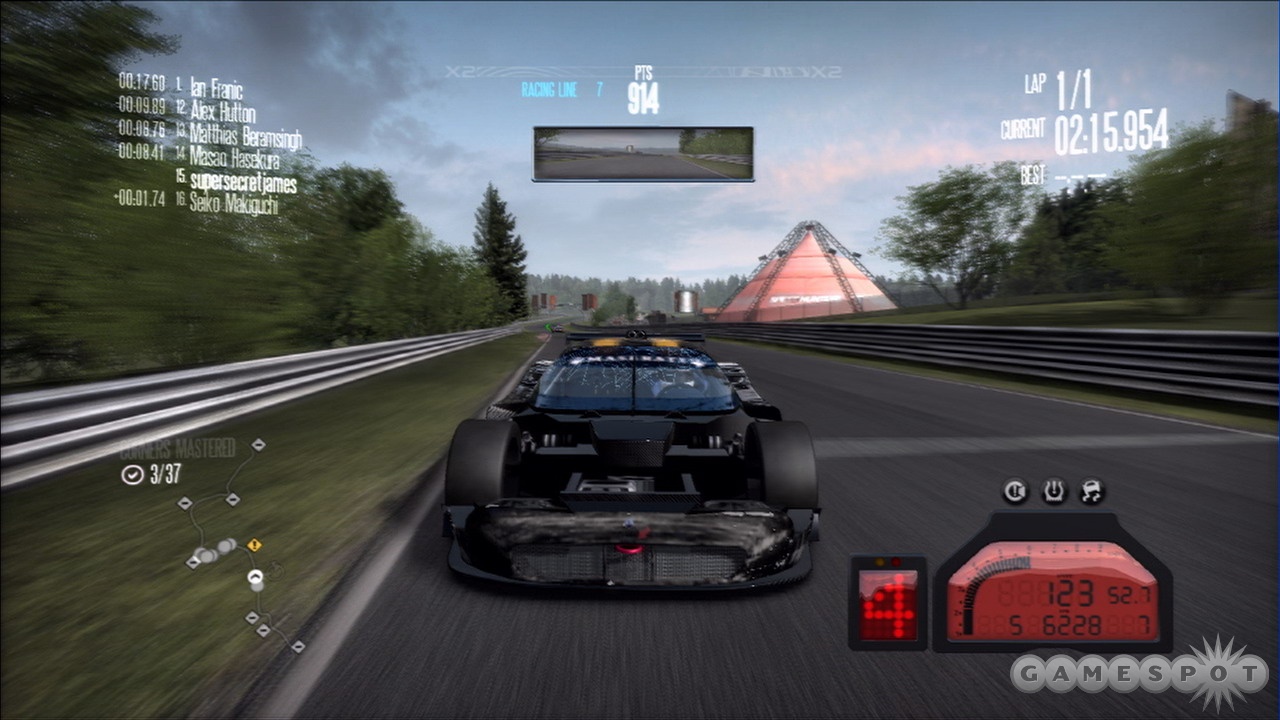
Like the visuals, Shift's audio fares better on the track than it does off it. Some of the cars' engine noises are a real treat, and they change as you upgrade your cars with new exhausts, turbo systems, and the like. The sequences of sound effects and radio chatter that play while you're navigating menus are bizarre, though, and anytime you think they're going to transition into something resembling a tune, you're wrong. The short, looping track that plays during loading screens is less offensive, but the frequent load times can be so long on occasion that even that will start to grate after a while.
Need for Speed: Shift has a good selection of cars and plenty of varied tracks (ranging from small ovals and a figure-eight track to lengthy street and grand prix circuits) to race them on. Other than a somewhat interesting experience system, though, it offers nothing that hasn't already been done better elsewhere. Shift is neither an arcade racer nor a simulation; it's stuck somewhere between the two, and while there's plenty of good racing to be had here, it's unlikely to completely satisfy fans of either.